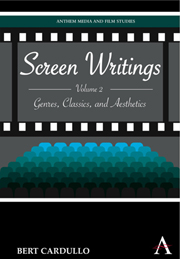Book contents
- Frontmatter
- Contents
- List of Illustrations
- Introduction: The Film of Value
- Part I Film Genres, Film Classics, and Film Aesthetics
- 1 Shooting the City: The Gangster, Manhattanites, and the Movies
- 2 Back to the Future, or the Vanguard Meets the Rearguard
- 3 Flags and Letters, Men and War
- 4 Farce, Dreams, and Desire: Some Like It Hot Re-viewed
- Interlude
- Part II Classification, Re-classification, and Assessment
- Bibliography of Related Criticism
- Index
- Plate section
4 - Farce, Dreams, and Desire: Some Like It Hot Re-viewed
from Part I - Film Genres, Film Classics, and Film Aesthetics
Published online by Cambridge University Press: 05 March 2012
- Frontmatter
- Contents
- List of Illustrations
- Introduction: The Film of Value
- Part I Film Genres, Film Classics, and Film Aesthetics
- 1 Shooting the City: The Gangster, Manhattanites, and the Movies
- 2 Back to the Future, or the Vanguard Meets the Rearguard
- 3 Flags and Letters, Men and War
- 4 Farce, Dreams, and Desire: Some Like It Hot Re-viewed
- Interlude
- Part II Classification, Re-classification, and Assessment
- Bibliography of Related Criticism
- Index
- Plate section
Summary
Now celebrating its fiftieth anniversary, Some Like It Hot (1959) is still significant in four ways in American film history. It is the best film by the last European director to flourish in the United States. (Hollywood has seen two principal “waves” of European directors. The first group, including such men as Ernst Lubitsch and F. W. Murnau, were imported in the 1920s by an American industry that was jealous of European artistic advances and worried about commercial competition. The second group consisted of the political refugees of the 1930s.) It is the best film of the last great sex star created by Hollywood. It is the last of the carefree American comedies that sprang up when sound came in, bloomed through the thirties, and had a revival after World War II. And it is the last really good film farce produced in the United States to date. There have been new imitations of old farces, there have been new farces, but all are inferior to Some Like It Hot, in part because, unlike Billy Wilder's picture and all other great farces, cinematic or theatrical, they lack conviction in the moving body – running, sliding, hurtling, wheeling, bicycling, jumping, climbing, and falling – as a source of wonders.
The plot concerns Joe (played by Tony Curtis), a saxophone player, and Jerry (Jack Lemmon), a bass fiddler, both young and broke, who accidentally witness the Saint Valentine's Day massacre of one gang by another in Chicago in 1929.
- Type
- Chapter
- Information
- Screen WritingsGenres, Classics, and Aesthetics, pp. 61 - 70Publisher: Anthem PressPrint publication year: 2010



